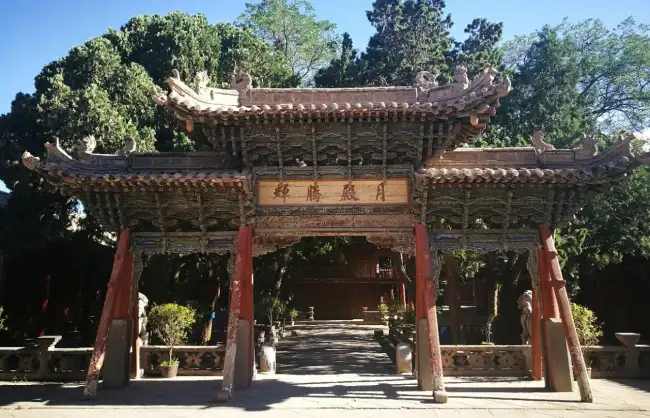Written by Veronica |
Confucian Temple in Wuwei Gansu, was built in 1437 during the Ming Dynasty and took two years to complete, covering a total area of 30096 square meters. Wuwei Confucian Temple is not only famous for its magnificent architecture and rich history and culture, but also preserves buildings from various periods from the Ming Dynasty to the Republic of China era.
Wuwei Confucian Temple is the largest and best preserved temple in northwest China. It has become an important cultural relic to study the inner relationship between Hexi Corridor traditional architecture, Confucian culture and Wenchang culture.
Wuwei Confucian Temple Facts
- Location: 172, Chongwen Street, Liangzhou District, Wuwei City, Gansu Province
- Ticket Price: 30 yuan/person
- Opening Time: 8:30-18:00 (no entry at 17:30)

What to See in Wuwei Confucian Temple
Wuwei Confucian Temple is an ancient building group composed of three parts: Liangzhou Confucian College, Confucian Temple and Wenchang Palace. The east is Wenchang Palace, the middle is Confucius Temple, and the west is Liangzhou Confucian College.
Unfortunately, Liangzhou Confucian College was basically destroyed in an earthquake during the Republic of China era. Today, the remaining Confucius Temple and Wenchang Palace cover an area of about 15,300 square meters.
Guiji Hall
Guiji Hall is the center of Wenchang Palace. The plaques on the front porch beam of Guiji Hall were written by scholars and calligraphers of different dynasties, from the “Hua Jun Tian Shu” plaque in the Kangxi period of Qing Dynasty (1695), and to the “Wen Jiao Kai Zong” plaque in the Republic of China period (1939). Guiji Hall still retains the shrine of the early Qing Dynasty, enshrining the statues of Emperor Wenchang and his attendants.
Panchi and Zhuangyuan Bridge
Panchi is located in the first courtyard in the south of the Confucian Temple. There is a wooden bridge over the pool, called “Zhuangyuan Bridge”. It is used for the Confucian scholars who won the champion to walk across the Panchi. In 1980, the craftsmen repaired the Panchi and Zhuangyuan Bridges and changed the wooden bridge into a stone bridge.
Now it is a place for students to pray for their blessings. They would walk across the bridge and tie red ribbons on both sides of the bridge to pray for good results under the auspices of Confucius.
Wuwei City Museum
It is located in the Wuwei Confucian Temple and has a various collection of 46111 cultural relics. Here you can see jade crafts, wood products, bronze, gold and silver crafts, porcelain, silk, precious paintings and so on.
How to Get to Wuwei Confucian Temple
By bus: You can take bus No. 15 or 16 to Wenmiao Square station and walk about 100 meters to Wuwei Confucian Temple. Or, take bus No. 28/12 from Wuwei Railway Station to Fumin Community Station, then walk about 400 meters to Wuwei Confucian Temple.
By airplane: Arrive at Jinchang Airport by plane first, then you can take the direct tourist bus line to Wuwei Confucian Temple.

Attractions nearby Wuwei Confucian Temple
- Leitai Park: Since Leitai is the site where the “horse treading on a swallow” (Ma Ta Fei Yan) sculpture was discovered, the park’s scenery is designed around this rare treasure. Entering the front door is the Ma Ta Fei Yan Square, which is surrounded by the essence of Han culture of the large relief wall. See also Leitai Tomb of Han Dynasty
- Tiantishan Grottoes: It is honored as “the originator of grottoes” by the academic world, with the history of more than 1600 years. Visitors can descend the steps to the foot of the giant Buddha and get a closer look at the impressive statue, while admiring the well-preserved murals and sculptures.
- Luoshisi Pagoda: The 32-meter, 12-story Luoshi Pagado was built to commemorate the achievements of Kumarashi, a dignitary hierarch in the western regions, in promoting the Dharma and translating the scriptures in Wuwei city.







